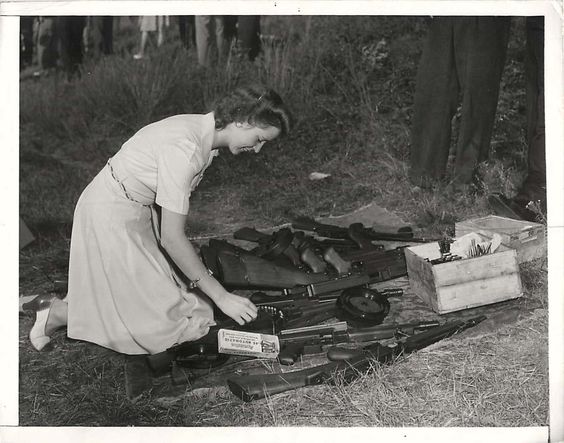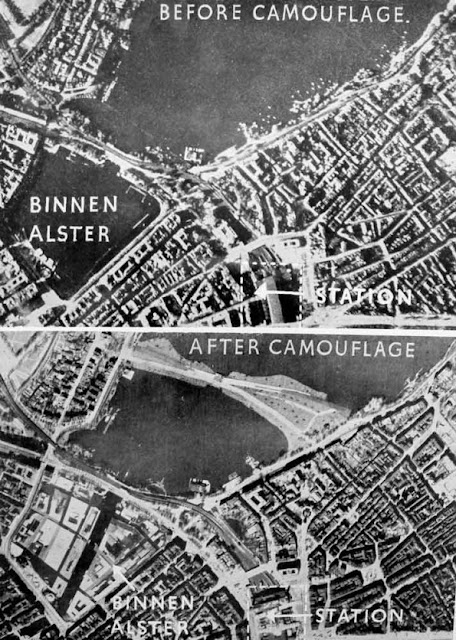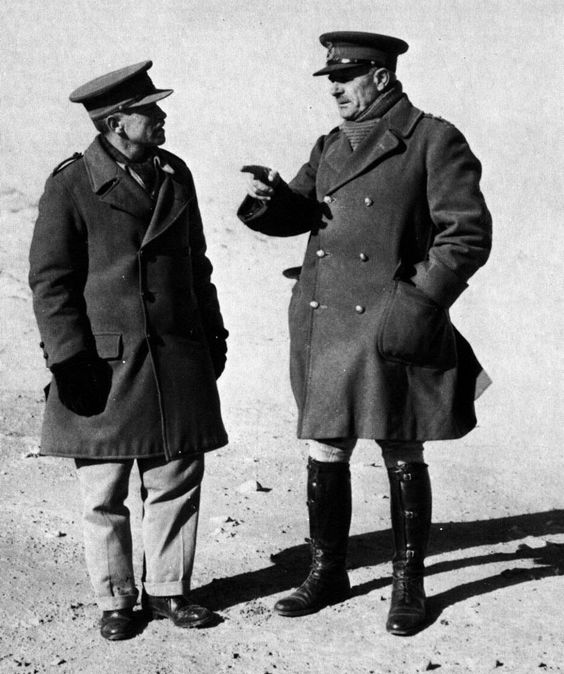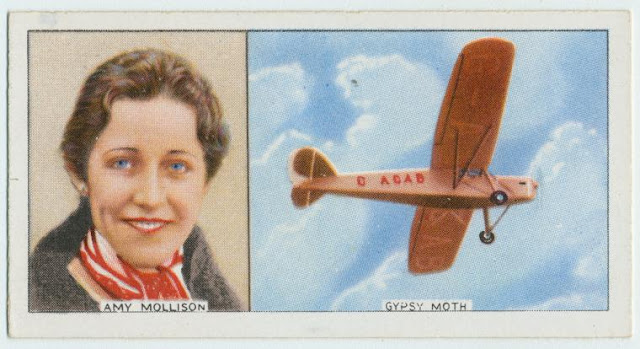Friday 8 August 1941
 |
| A Panzer.Kampfwagen III on 8 August 1941 near Kiestinki. |
The Germans captured Brest Fortress back near the border with Poland on 29 June. According to some accounts, the fortress held out for another month, but that is contradicted by the evidence. The Wehrmacht's 45th Infantry Division (Austrian) which subdued the fortress then moved east to join the general offensive by 2 July. Virtually all sources agree that Brest Fortress was solidly in German hands by the end of July, if not in June.
However, Brest Fortress was in ruins after multiple Luftwaffe raids and days of tank and artillery fire. There were lots of bombed-out areas that made good hiding places - collapsed rooms and the like. Apparently, one or more Soviet soldiers remained hidden in the ruins, undetected by the occupying Germans, long past the surrender in June (or July, if you like). There is an inscription on the fortress walls that is dated 7 July 1941 ("I'm dying but I won't surrender. Farewell, Motherland. 20.VII.41"), presumably made by a trapped and uncaptured Soviet soldier. So, there is proof of Soviet resistance extending into July, at least.
At this point, the story gets sketchy. Major Pyotr Gavrilov, later decorated as a Hero of the Soviet Union as if to stamp certainty on the later presence of unsubdued Soviet defenders, reportedly (everything about the details is uncertain) is captured only on 23 or 24 July (accounts vary on the exact date). That may be the end of Soviet resistance - but maybe not. Some believe that at least one Soviet soldier remains hidden even longer. And that's where Hitler and Mussolini (literally and figuratively) come in.
 |
| Adolf Hitler (center, in trench coat) and Benito Mussolini stroll through Brest Fortress, 8 August 1941. |
Here is where the two stories intertwine. According to some accounts, only today are the final armed Soviet defenders rooted out of the bombed-out ruins of Brest Fortress. As noted, this coincides with Hitler's visit. Given Hitler's predilection for walking ahead of most of those accompanying him (as evidenced by photos of such walk-throughs by Hitler, including the one above), it is not beyond the realm of possibility that one of those hidden Soviet soldiers could have had a clear sight and gotten off a lucky shot at just the right moment. This would have altered history for both Germany and Italy and, really, the entire world.
But that doesn't happen. Hitler and Mussolini visit and then leave unharmed. And, the course of World War II continues on toward its inevitable conclusion.
 |
| Colonel-General Georg Lindemann (left), commander of German L Army Corps in 18th Army in Army Group North, 8 August 1941 (Gregor, Federal Archive, Bild 101I-212-0206-30). |
In the Army Group North sector, the Germans open an offensive against the Soviet Luga River defensive line. German 1 Panzer Division (Lieutenant General Friedrich Kirchner) and 6 Panzer Division (Major General Franz Landgraf) battle Soviet 111th and 125th Rifle Divisions. Other German troops in 41 and 38 Corps advance to attempt to cut the Narva-Leningrad railroad.
In the Army Group Center sector, German XXIV Corps (General of Panzer Troops Geyr von Schweppenburg) eliminates a Soviet pocket at Roslavl and take 38,000 prisoners. The German 3rd Panzer Division (Lieutenant General Model) complains that it has to wait too long for supplies to arrive on the overburdened railroads.
 |
| A captured Soviet General of the Soviet 6th Army (Lt. General Ivan N. Musychenko) is interrogated near Uman, 8 August 1941. (Hübner, Federal Archive, Bild 146-1975-086-05A) |
It is day three of the Romanian investment of the Soviet-held port of Odesa. The Romanian 4th Army gradually extends its line to form a solid line around the city. Some sources claim that today is the real start of the Siege of Odessa and not 5 August. The surrender at Uman further isolates Odessa and makes any kind of relief increasingly unlikely.
The RAF sends 50 Hampden and 4 Whitley bombers to attack the submarine base at Kiel. It loses 2 Hampdens and one Whitley. The planes encounter heavy Flak. The bombs kill 13 people, including 11 Italian "guest workers" at a farm outside Kiel. German sources indicate that bombing accuracy is poor, which also is suggested by the fact that most of the casualties occur outside of Kiel in a rural area. However, the RAF's weekly summary report describes the attack thusly:
Excellent weather over Kiel on the [8th] enabled 88 aircraft accurately to bomb the’ Deutsche Werke Shipyards. Of the 104 tons of H.E. bombs and 4,836 incendiaries released, a number fell directly in the centre of the target, starting many fires; a particularly large fire was also observed on the south side of the city.The discrepancy between ground sources and the RAF is unexplainable. However, a hint as to what is going on may be gleaned from the fact that the RAF soon will decide (with the Butts Report) that bombing accuracy is extremely poor, with most attacks failing to come within miles of the intended target.
The RAF sends 44 Wellingtons to attack the railway and shipping yards at Hamburg. One plane fails to return. Visibility is poor and few planes are able to attack. The RAF reports this attack as follow:
At Hamburg, however, on the same night, weather was bad and identification of objectives was almost impossible; except for bombbursts and fires, no results were observed.There are five deaths and 8 injured at Hamburg, with 20 people made homeless. While the RAF believes that the Kiel raid was much more accurate than the Hamburg raid, in fact, more people are killed at Hamburg than within Kiel itself.
The RAF also sends seven Hampdens without loss to lay mines in the Frisian Islands, off Kiel, and in the Norwegian fjords.
 |
| Questioning of the Russian Lieutenant-General Ivan N. Musychenko (center), captured during the fighting at Uman, by officers of the Wehrmacht, 8 August 1941. (Hübner, Federal Archive, Bild 146-1992-081-13A). |
The RAF bombs and sinks 2546-ton Danish freighter Venus at the mouth of the Schlei River off Schleswig-Holstein.
The Luftwaffe (Ju-88 aircraft of KGR.806) bombs and sinks Soviet Izyaslav-class destroyer Karl Marx in Loksa Bay near the Estonian capital of Tallinn (Reval).
Soviet destroyers Statny and Surovy park offshore in Moon Sound and shell German coastal battery Markgraf.
Soviet patrol vessel No. 410 and auxiliary minesweeper No. 76 are lost today from unknown causes, perhaps scuttling to avoid German capture.
German minelayers lay minefields D.10 to D.30 and Finnish minelayers lay minefields F-18 to F-22 in the Gulf of Finland.
 |
| Raketen-Jagdflugzeug (rocket fighter) Messerschmitt Me 163 A-V4 "Komet" (Kennung KE+SW) at its airfield Flugfeld, ca. 8 August 1941 (Federal Archive, Bild 146-1972-058-62). |
The Luftwaffe bombs and sinks British freighter Cordene in the North Sea. The ship is traveling with Convoy FN-503 when it is attacked. Everyone survives.
The Luftwaffe bombs Royal Navy minesweeper Selkirk and scores a near-miss. No leaks develop, so the minesweeper stays in service.
Convoy WS-8C (Winston Special) departs from the Clyde and heads to Scapa Flow as part of Operation Leapfrog. This is a scheduled operation to seize the Azores Islands. There are numerous landing ships, oilers, and freighters escorted by eight destroyers.
Royal Navy Anti-Submarine Warfare trawler Coverley (Lt. Robert R. Taylor) is commissioned and boom defense vessel Barbridge launched.
Canadian minesweepers HMCS Ganonque (Lt. Edward M. More) and Nipigon (Lt. Commander Clarence A. King) are commissioned.
U-627 is laid down.
 |
| HMS Thunderbolt. |
RAF Fulmar bombers based on Malta bomb Gerbini airfield on Malta. This raid causes fires at the airfield and apparently causes enough damage to prevent the Italian Regia Aeronautica from attacking Malta during the night.
RAF bombers attack the Corinth Canal.
The Luftwaffe bombs Ismailia, Port Said, and Suez during the night.
An Axis convoy of four freighters and four destroyers departs from Naples bound for Tripoli.
Battle of the Black Sea: The Russian Danube Flotilla supports the Red Army's withdrawal past the Bug River Delta from today through 12 August.
Battle of the Indian Ocean: Convoy BA-4 departs from Bombay bound for Aden.
 |
| The Walloon legion preparing to move to the East Front. In the center is Léon Degrelle. Brussels, August 8, 1941. |
In Montenegro, General Alessandro Pirzio Biroli orders the confiscation of insurgents' property. The revolt that began on 13 July still continues with little interference from the Italian occupation authorities. The Italians are assembling strong forces for a counter-offensive which include six divisions (Messina, Puglie, Pusteria, Taro, Venezia, and Cacciatori delle Alpi), two Blackshirts Legion (Nos. 108 and 164), two combat groups (I group of Cavalry Regiment Cavalleggeri Guide and Skanderbeg) and two battalions of the border guard. While this is a formidable force, the territory is very rugged and difficult to subdue.
Anglo/US Relations: President Roosevelt continues waiting aboard a cruiser at Placentia Bay for the arrival of British Prime Minister Winston Churchill aboard a battleship.
US/Japanese Relations: Talks continue between the US State Department and Japanese Ambassador Nomura in DC. The Japanese now are proposing a summit meeting between President Roosevelt and Japanese Prime Minister Fumimaro Konoye, but US Secretary of State Cordell Hull merely agrees to take the proposal under consideration.
 |
| Anticipating a siege, Soviet authorities have camouflaged a Bronze Horseman so that it cannot be seen by Luftwaffe bombers, August 8, 1941. |
A big fan of artillery (he calls it the "Queen of battle"), Joseph Stalin orders the formation of eight Guards mortar regiments to operate Katyusha rocket launchers. These units will be placed with Guards formations, which are ordinary army units that have distinguished themselves in combat.
The Soviets officially form the Stavka of the Supreme High Command [Stavka Verkhnogo Glavnokomandovaniia - SVGK]. This replaces some previous temporary command arrangements and more closely resembles the command structure of previous wars. Stalin, of course, is the Supreme High Commander and uses the other members of the Stavka (such as General Georgy Zhukov) to submit ideas and act as troubleshooters to go to special Fronts and run special operations there.
The swept-wing plane is extremely dangerous to fly for several reasons, including the fact that its rocket engine only works for about seven minutes to get to altitude, and then the pilot must glide from extreme heights to make an unpowered landing - with only one opportunity to "stick the landing." In addition, the fuel is composed of two separate liquids that must be keep separated until ignition - and if for some reason they come into contact with each other, a massive explosion occurs.
Luftwaffe General Alexander Löhr was mentioned in the Wehrmachtbericht daily radio report for the third time. This is a high honor, akin to receiving a medal in terms of prestige gained. It is especially significant because Löhr is not German, but Austrian.
 |
| Léon Degrelle in Brussels making a farewell speech before embarking with his fellow troops for the Eastern Front, 8 August 1941. |
Japanese Military: The Imperial Japanese Navy commissions 30,000-ton liner Shokaku (Captain Jojima Takatsugu) as a special-purpose ship (it will be converted into an aircraft carrier). The IJN also begins the conversion of 9975-ton tanker Nippon Maru into a naval auxiliary tanker in Kobe and requisitions 6615-ton oiler Manju Maru.
US Government: Treasury Secretary Henry Morgenthau, Jr. addresses the Senate Finance Committee on the subject of taxation. He portrays as "taxation as an essential part of national defense." To do this, Morgenthau argues, taxation must be extended "to lower incomes." Morgenthau proposes that certain "discriminations" in the tax code be eliminated to make this "extension downward" more palatable, including removing deductions for oil depletion and eliminating certain provisions that are favorable to married couples.
Yugoslavia: The country officially is dissolved, and is taken over largely by Italy.
China: The Japanese continue their intensified air assault on the Nationalist capital at Chungking.
Hungary also enacts anti-Jewish laws.
Germans and Lithuanians murder an unknown number of Jews in the town of Zeimel. A plaque is later erected in the Chamber of the Holocaust at Mount Zion which reads:
For an everlasting remembrance. For the martyrs of the Zeimel Community (Lithuania) who were annihilated by the Germans and their Lithuanian collaborators (may their names be erased) on the 8th day of August 1941. Remembrance Day 15 Av 5701. May their souls be bound up in the bond of life. [Signed]The Emigrants of Zeimel in Israel and the Diaspora.Thousands of Jews from Dvinsk, Latvia, are transported to the Pogulanka Forest and murdered.
American Homefront: Paramount Pictures releases "Wide Open Town," a Hopalong Cassidy film starring William Boyd and Russell Hayden. Evelyn Brent appears as a villainous saloon owner who develops feelings for Hopalong Cassidy, which ultimately dooms her corrupt regime in the town. A "wide-open town" is Wild West parlance meaning there is no sheriff.
MGM releases "Whistling in the Dark," a comedy directed by S. Sylvan Simon and starring Red Skelton, Conrad Veidt, and Ann Rutherford. This becomes a very successful film about an actor in radio murder mysteries (Skelton) who gets involved in solving crimes. This film leads to two sequels, "Whistling in Dixie" (1942) and "Whistling in Brooklyn" (1943). Eve Arden also appears.
Bandleader Les Brown and his orchestra take advantage of the publicity engendered for New York Yankee Joe DiMaggio during his record 56-game hitting streak (which ended in July) and record "Joltin' Joe DiMaggio." Written by New York disk jockey Alan Courtney and songwriter turned Jehovah’s Witness Minister Ben Homer, singer Betty Bonney gives life to lyrics that recount DiMaggio's path to the record:
He tied the mark at forty-fourThis is not the last time that DiMaggio will make an impact on the popular music scene, as in 1967 Simon & Garfunkel also make a famous reference to him in "Mrs. Robinson." "Joltin' Joe DiMaggio" is not released until 10 November, the U.S. Marine Corps' birthday.
July the 1st you know
Since then he's hit a good twelve more
Joltin' Joe DiMaggio.
 |
| August 8, 1941 - A woman in Bridgeport, Connecticut, is trained by local police in the use of Thompson sub-machine guns. |
August 1941
August 2, 1941: Uman Encirclement Closes
August 3, 1941: Bishop von Galen Denounces Euthanasia
August 4, 1941: Hitler at the Front
August 5, 1941: Soviets Surrender at Smolensk
August 6, 1941: U-Boats in the Arctic
August 7, 1941: Soviets Bomb Berlin
August 8, 1941: Uman Pocket Captured
August 9, 1941: Atlantic Conference at Placentia Bay
August 10, 1941: Soviet Bombers Mauled Over Berlin
August 11, 1941: Rita Hayworth in Life
August 12, 1941: Atlantic Charter Announced
August 13, 1941: The Soybean Car
August 14, 1941: The Anders Army Formed
August 15, 1941: Himmler at Minsk
August 16, 1941: Stalin's Order No. 270
August 17, 1941: Germans in Novgorod
August 18, 1941: Lili Marleen
August 19, 1941: Convoy OG-71 Destruction
August 20, 1941: Siege of Leningrad Begins
August 21, 1941: Stalin Enraged
August 22, 1941: Germans Take Cherkassy
August 23, 1941: Go to Kiev
August 24, 1941: Finns Surround Viipuri
August 25, 1941: Iran Invaded
August 26, 1941: The Bridge Over the Desna
August 27, 1941: Soviets Evacuate Tallinn
August 28, 1941: Evacuating Soviets Savaged
August 29, 1941: Finns take Viipuri
August 30, 1941: Operation Acid
August 31, 1941: Mannerheim Says No
2020






